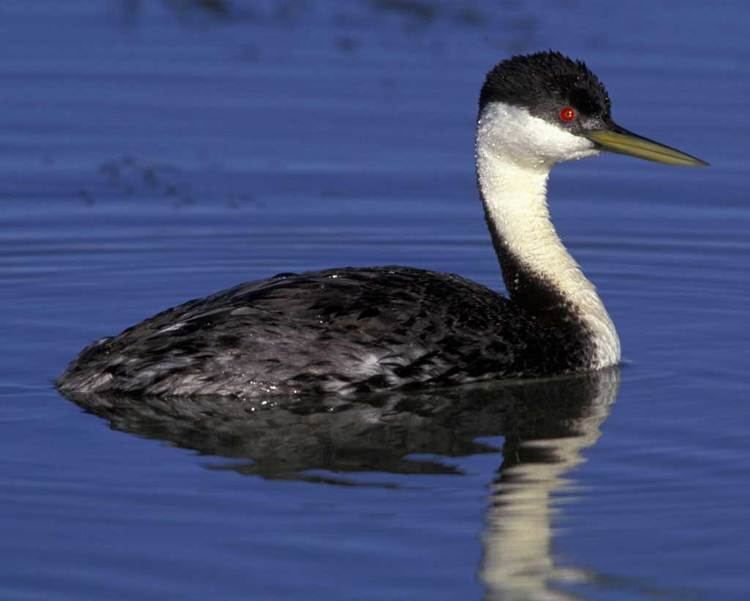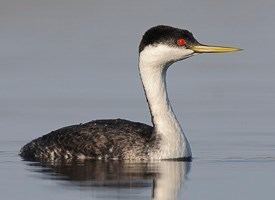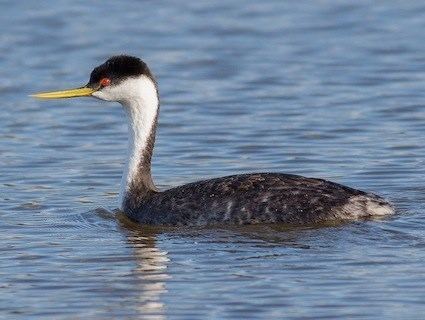Order Podicipediformes Genus Aechmophorus Higher classification Aechmophorus | Phylum Chordata Family Podicipedidae Scientific name Aechmophorus occidentalis Rank Species | |
 | ||
Similar Grebe, Bird, Clark's grebe, Aechmophorus, Pied‑billed grebe | ||
Western grebe birds walking on water
The western grebe (Aechmophorus occidentalis) is a species in the grebe family of water birds. Folk names include "dabchick", "swan grebe" and "swan-necked grebe".
Contents
- Western grebe birds walking on water
- Clark s and western grebe
- Description
- Subspecies
- Breeding
- Food and feeding
- References

Western grebe fossils from the Late Pleistocene of SW North America were described as a distinct species, but later ranked as a paleosubspecies Aechmophorus occidentalis lucasi. More recent study found them to fall within the variation now known to exist in today's birds.

Clark s and western grebe
Description

The western grebe is the largest North American grebe. It is 55–75 cm (22–30 in) long, weighs 795–2,000 g (1.753–4.409 lb) and measures 79–102 cm (31–40 in) across the wings. It is black-and-white, with a long, slender, swan-like neck and red eyes. It is easily confused with Clark's grebe, which shares similar features, body size, behavior and habitat, and hybrids are known.
The western grebe has black around the eyes and a straight greenish-yellow bill whereas the Clark's grebe has white around the eyes and an up-turned bright yellow bill. The downy young of Western are grey; Clark's downy young are white.
Subspecies
There are two subspecies of the western grebe:
Breeding
Western grebes nest in colonies of hundreds on large inland lakes, sometimes using coastal marshes, in western North America. It has a spectacular courtship display; two birds will rear up and patter across the water's surface. Northern birds migrate west to coastal ocean in winter; birds in the southwest and Mexico may be permanent residents.
Food and feeding
This bird dives for carp, herring, mollusks, crabs, and salamanders.
